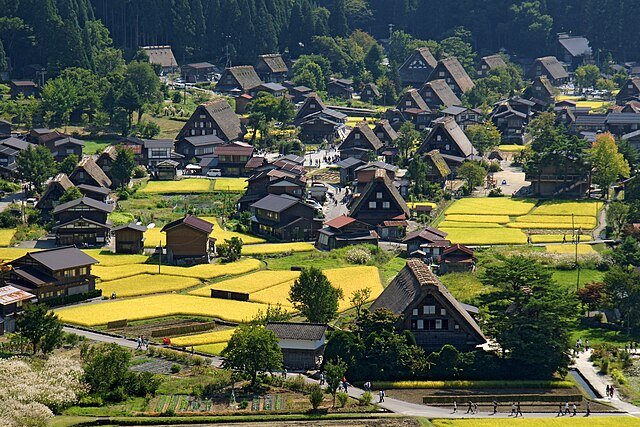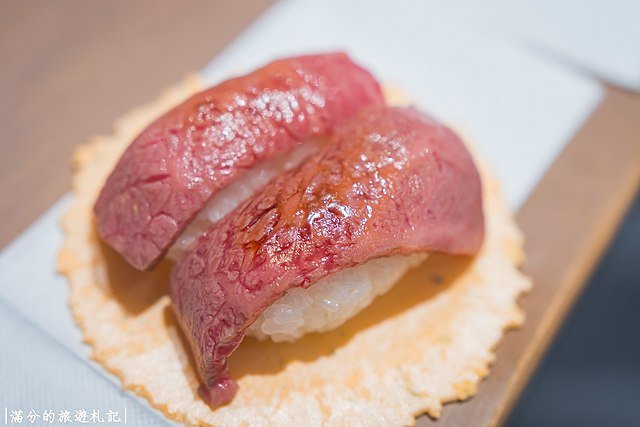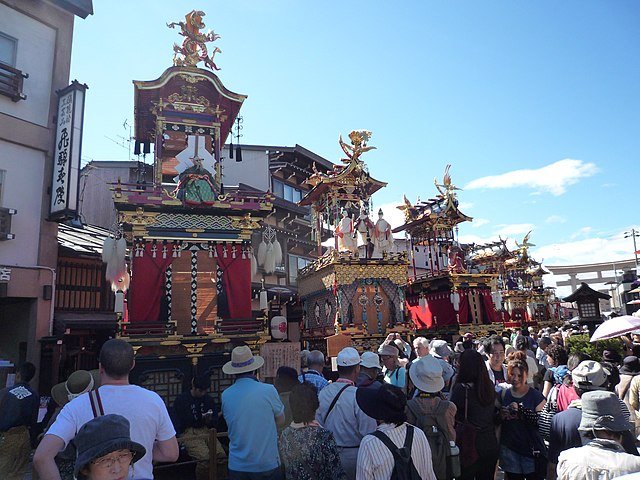Welcome to Japan’s Fairytale Mountains
Picture this: You’re strolling down streets that feel frozen in time. Wooden houses creak under the weight of 400 years of history. Steam rises from sake breweries. Somewhere nearby, an old man carves intricate patterns into cedarwood using tools his ancestors passed down. No, you haven’t stumbled onto a Studio Ghibli movie set—this is Takayama and Shirakawa-go, where Japan’s heart beats quietly, undisturbed by neon lights and fast-paced city life.
While most tourists rush to Tokyo, Kyoto, or Osaka, these sleepy mountain towns offer something rare and magical—an authentic glimpse into Old Japan, without the crowds or chaos. Ready for a trip that hits the soul and not just your Instagram grid? Let’s go.

Why Takayama and Shirakawa-go Deserve a Spot on Your Bucket List
Takayama: The “Little Kyoto” That’s Somehow Cooler
Tucked away in the Japanese Alps, Takayama greets you with fresh mountain air and the gentle sound of temple bells. The moment I stepped off the train, I felt like I’d stepped into a different era—no high-rises, no rush—just peace.
Wander through the Sanmachi Suji district, a charming cluster of narrow streets where Edo-period merchant houses now host artisan workshops, sake breweries, and tiny family-run cafes. It’s Kyoto without the selfie sticks.
Pro tip: Wake up early and hit Takayama’s morning markets around 6–7 AM. You’ll beat the crowds and maybe snag some free samples of pickled veggies or locally made miso.
Shirakawa-go: The Village That Snow Couldn’t Break
About 30 miles from Takayama lies Shirakawa-go, a UNESCO World Heritage site that’s straight-up postcard perfect. The village is famous for its gassho-zukuri farmhouses—steep thatched roofs that resemble hands in prayer, built to withstand massive snowfall.
I’ll never forget seeing it from the Shiroyama Observation Deck at sunset. Smoke curled lazily from chimneys, snow sparkled like glitter, and everything went quiet—like nature paused for a moment to admire it too.
When’s the Best Time to Go?
Let’s break it down by season:
Winter (December–March): Snowy fairytale vibes, especially during Shirakawa-go’s illumination nights. But pack your thermals and book early!
Spring (April–May): Cherry blossoms + mild weather = chef’s kiss. But book ahead—this is a popular time.
Summer (June–August): Festivals, lush greenery, and some serious humidity. Great if you’re up for the energy.
Autumn (September–November): MY FAVORITE. Fiery fall colors, crisp air, and fewer crowds. Seriously, don’t miss October.
Getting There Without Losing Your Mind
From Tokyo:
- JR Tokaido Shinkansen → Nagoya (1.5 hrs, ~¥11,300)
- Transfer to JR Hida Limited Express → Takayama (2.5 hrs, ~¥5,510)
- Total: ~4 hrs, ~¥16,800
From Osaka/Kyoto:
- Same train route via Nagoya, ~3.5 hrs, ~¥11,300
Budget Option:
- Overnight bus from Tokyo for ~¥6,000 (Willer Express is solid)
Takayama → Shirakawa-go:
- Nohi Bus (50 mins, ¥2,600 one-way). Book ahead during busy seasons.

Exploring Takayama Like a Local
Wander Sanmachi Suji
You’ll want to walk slow here. Take in the wooden facades, sake barrels outside storefronts, and old-timey signage. Try:
- Takayama Jinya (¥440): The only remaining Edo-period government building in Japan. It’s eerie and amazing.
- Sake Breweries: I loved Funasaka Shuzo—the water they use flows straight from granite mountain springs. Tastings cost ¥300–500.
- Craft Shops & Food Stalls: You haven’t lived until you’ve had a hida beef skewer (¥800–1,200). Trust me.
Morning Markets = Hidden Gem Heaven
Get up early and browse stalls selling:
- Pickled veggies (¥200–400)
- Handmade Sarubobo dolls (¥300–1,500)
- Mountain herbs and miso paste
Perfect for quirky souvenirs or picnic snacks!
Where to Stay in Takayama
Luxury Ryokan:
- Honjin Hiranoya Kachoan (¥40,000-60,000 per person): Traditional luxury with private hot springs
- Takayama Ouan (¥25,000-40,000 per person): Modern comfort with traditional aesthetics
Mid-Range Options:
- Ryokan Tanabe (¥12,000-18,000 per person): Family-run inn with exceptional kaiseki dinners
- Hotel Associa Takayama Resort (¥15,000-25,000 per room): Mountain views with modern amenities
Budget-Friendly:
- J-Hoppers Hida Takayama Guesthouse (¥3,000-4,500 per night): Clean hostel with kitchen facilities
- Minshuku Sosuke (¥8,000-12,000 per person): Traditional guesthouse with home-cooked meals

Shirakawa-go: Where Time Stands Still
Exploring the Village
- Wada House (¥400): Step inside the biggest gassho-zukuri home—massive beams, silk-making tools, and centuries of history.
- Myozenji Temple (¥300): A quiet escape with gardens and timeless architecture.
- Shiroyama Deck: Free. Go for golden hour or early morning mist. It’s goosebumps-level good.
Staying Overnight = 10/10 No Regrets
- Koemon (¥11,000–15,000): A 250-year-old farmhouse with open hearth dining.
- Yomoshiiso (¥9,000–13,000): Traditional and peaceful.
- Shirakawago no Yu (¥8,000–12,000): Modern meets rustic.
Book 2–3 months early, especially during fall foliage and winter illumination season!
Seasonal Highlights
Winter Illumination: Select Saturday and Sunday evenings in January and February transform the village into a winter fairy tale. Advanced reservations required through official tour operators.
Spring Mountain Vegetables: May and June offer incredible sansai (mountain vegetable) cuisine at local restaurants.
Autumn Colors: Late October to early November provides the most spectacular fall foliage photography opportunities.

What to Eat (Hida Beef, Baby!)
Hida Beef: Japan’s Hidden Culinary Gem
Hida beef rivals Kobe for marbling and flavor. The cattle graze in mountain pastures, creating incredibly tender, flavorful meat.
Where to Try Hida Beef:
- Ajikitcho Bunbu-an (Takayama): ¥8,000-15,000 for premium cuts
- Hida Beef Maruaki (Takayama): More affordable at ¥3,000-6,000
- Irori Sanzoku (Shirakawa-go): Traditional hearth cooking, ¥4,000-8,000
Regional Specialties
Hoba Miso: Fermented soybean paste grilled on magnolia leaves with vegetables and mushrooms (¥800-1,200)
Mitarashi Dango: Sweet soy-glazed rice dumplings, perfect with green tea (¥200-300)
Mountain Vegetables: Seasonal sansai dishes featuring ferns, bamboo shoots, and wild herbs (¥1,500-2,500)
Local Sake: Sample varieties made with pure mountain water at over a dozen breweries
Budget Tips That’ll Stretch Your Yen
Sample 3-Day Budget Breakdown
Budget Traveler (¥12,000-15,000 per day):
- Hostel accommodation: ¥3,000-4,000
- Meals: ¥4,000-6,000 (convenience stores, local eateries)
- Transportation: ¥3,000-4,000
- Attractions: ¥2,000-3,000
Mid-Range Traveler (¥25,000-35,000 per day):
- Business hotel/ryokan: ¥12,000-18,000
- Meals: ¥8,000-12,000 (local restaurants, some hida beef)
- Transportation: ¥3,000-4,000
- Attractions/experiences: ¥4,000-6,000
Luxury Traveler (¥50,000+ per day):
- Premium ryokan: ¥30,000-50,000
- Fine dining: ¥15,000-25,000
- Private transportation: ¥8,000-12,000
- Exclusive experiences: ¥5,000-10,000
Money-Saving Strategies
- JR Pass: If traveling from Tokyo/Osaka, the 7-day JR Pass (¥29,650) pays for itself with just the round-trip journey
- Takayama-Hokuriku Area Tourist Pass: ¥15,280 for 5 days covering the region
- Lunch Sets: Restaurant lunch sets cost 40-50% less than dinner
- Convenience Store Meals: High-quality meals for ¥500-800
- Free Activities: Morning markets, temple visits, and hiking trails cost nothing
Local Etiquette (Don’t Be That Tourist)
Visiting Sacred Spaces
Many buildings in both villages remain private homes or active temples. Always respect photography restrictions and noise levels. When visiting temples, bow slightly before entering and remove hats.
Ryokan Etiquette
- Remove shoes when entering
- Yukata (cotton robes) are for indoor use only
- Bathe before entering onsen (hot springs)
- Meals are typically served at set times
Supporting Local Communities
These villages face challenges from overtourism and aging populations. Support local businesses, follow designated paths, and consider staying overnight to contribute meaningfully to the local economy.

Hidden Gems You’ll Love
Secret Viewpoints
Tenshukaku Observatory: Lesser-known viewpoint 15 minutes beyond Shiroyama, offering wider valley views without crowds.
Takayama’s Higashiyama Walking Course: 3.5km temple circuit through forested hills, providing city views and spiritual experiences.
Local Festivals
Takayama Festival (April 14-15, October 9-10): One of Japan’s three most beautiful festivals featuring elaborate floats and traditional performances.
Doburoku Festival (October, Shirakawa-go): Celebrating the harvest with traditional rice wine and folk performances.
Photo Tips to Nail That Insta-Worthy Shot
Best Times for Photography
Golden Hour: 30 minutes before sunset creates warm, magical lighting Blue Hour: 20-30 minutes after sunset for balanced sky and artificial lighting Early Morning: Misty conditions often create ethereal atmospheres
Composition Techniques
- Use leading lines from rivers or paths to draw viewers into the scene
- Include human elements for scale and storytelling
- Frame thatched roofs against mountain backdrops
- Capture steam rising from hot springs or cooking fires
Packing? Don’t Overthink It
Spring/Summer Essentials
- Lightweight rain jacket
- Comfortable walking shoes with good grip
- Layers for temperature changes
- Insect repellent for mountain areas
Autumn/Winter Gear
- Warm, waterproof boots
- Thermal layers
- Waterproof gloves and hat
- Hand warmers for extended outdoor photography
Suggested Itinerary (4 Days of Pure Magic)
Recommended Itinerary
Day 1: Takayama Arrival
- Morning: Explore Sanmachi Suji district
- Afternoon: Visit Takayama Jinya and local breweries
- Evening: Traditional dinner at your ryokan
Day 2: Takayama Deep Dive
- Early morning: Visit morning markets
- Morning: Higashiyama Walking Course
- Afternoon: Craft workshops or museum visits
- Evening: Hida beef dinner
Day 3: Shirakawa-go
- Morning: Bus to Shirakawa-go
- Afternoon: Explore gassho-zukuri houses
- Sunset: Shiroyama Observation Deck
- Evening: Overnight in traditional minshuku
Day 4: Shirakawa-go & Departure
- Morning: Photography and final exploration
- Afternoon: Return journey via Takayama
FAQs
Q1. Is Shirakawa-go worth visiting if I’ve already been to Kyoto or Nara?
Absolutely, 100% yes. While Kyoto and Nara are rich in heritage, Shirakawa-go offers a completely different vibe—quiet, rural, and insanely picturesque with those thatched-roof gassho-zukuri homes. It feels more like you’re inside a folktale rather than visiting a historic site.
Q2. Can I visit both Takayama and Shirakawa-go in one day?
Technically yes, but honestly… don’t rush it. You’ll miss out on the slow charm and magical details that make both places special. If time’s tight, do Takayama as a full day and visit Shirakawa-go early the next morning. Better yet, spend a night in a traditional farmhouse in Shirakawa-go. It’s unforgettable.
Q3. Do I need to know Japanese to travel in this area?
Nope! While English isn’t super common in these remote villages, signage is surprisingly tourist-friendly. People are kind, and a smile + Google Translate go a long way. Knowing a few polite words like “arigatou” (thank you) or “sumimasen” (excuse me) helps and is always appreciated.
Q4. Is it family-friendly or more for couples/backpackers?
It’s for everyone. Whether you’re a solo traveler soaking in the peace, a couple chasing romance, or a family introducing your kids to real-life snow villages, there’s something here for you. Many accommodations are kid-friendly, and the slow pace makes it a great alternative to crowded tourist cities.
Your Journey to Old Japan Starts Here
Takayama and Shirakawa-go offer something increasingly rare in our modern world: authentic connection to history, culture, and natural beauty. These villages represent Japan’s heart and soul, preserved not as museum pieces but as living communities where tradition continues to thrive.
Whether you’re drawn by the architectural marvels, the incredible cuisine, or simply the chance to slow down and experience Japan’s gentler pace, these mountain villages will leave lasting impressions on your heart. The memories you create here—sharing sake with local brewers, staying in 300-year-old houses, watching sunrise paint the mountains gold—will stay with you long after you’ve returned home.
Start planning your journey to these fairy tale villages today. Book accommodations early, especially for peak seasons, and prepare for an adventure that will redefine your understanding of Japan’s incredible cultural depth.
良い旅を

